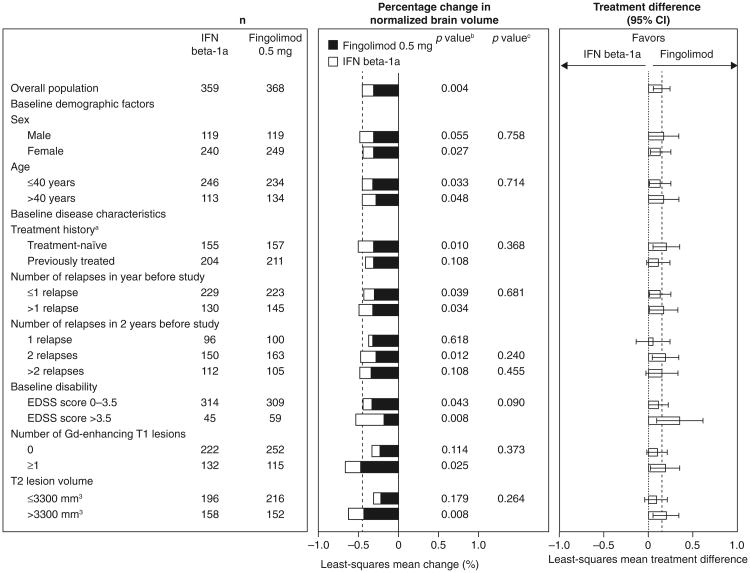Fig. 4.
Percentage change in normalized brain volume over 12 months in patient subgroups defined by demographic factors and baseline disease characteristics (intent-to-treat population). The percentage change in brain volume was analyzed using an ANOVA model adjusted for treatment for the overall result and for treatment, subgroup, and treatment by subgroup interaction for subgroup analyses. The p value for the ANOVA analysis refers to a t test for the treatment contrast. n number of patients in each group with a non-missing assessment of percentage change from baseline in normalized brain volume at month 12. aPatients were categorized according to whether they were treatment-naïve (had received no form of medication for MS before the study) or had previously received treatment for MS with any medication at any time before study enrollment. bp value for the treatment contrast within the subgroup. cp value for the treatment by subgroup interaction, which evaluates heterogeneity of the treatment effect (see “Methods”). ANOVA analysis of variance, EDSS expanded disability status scale, Gd gadolinium, IFN interferon, MS multiple sclerosis

